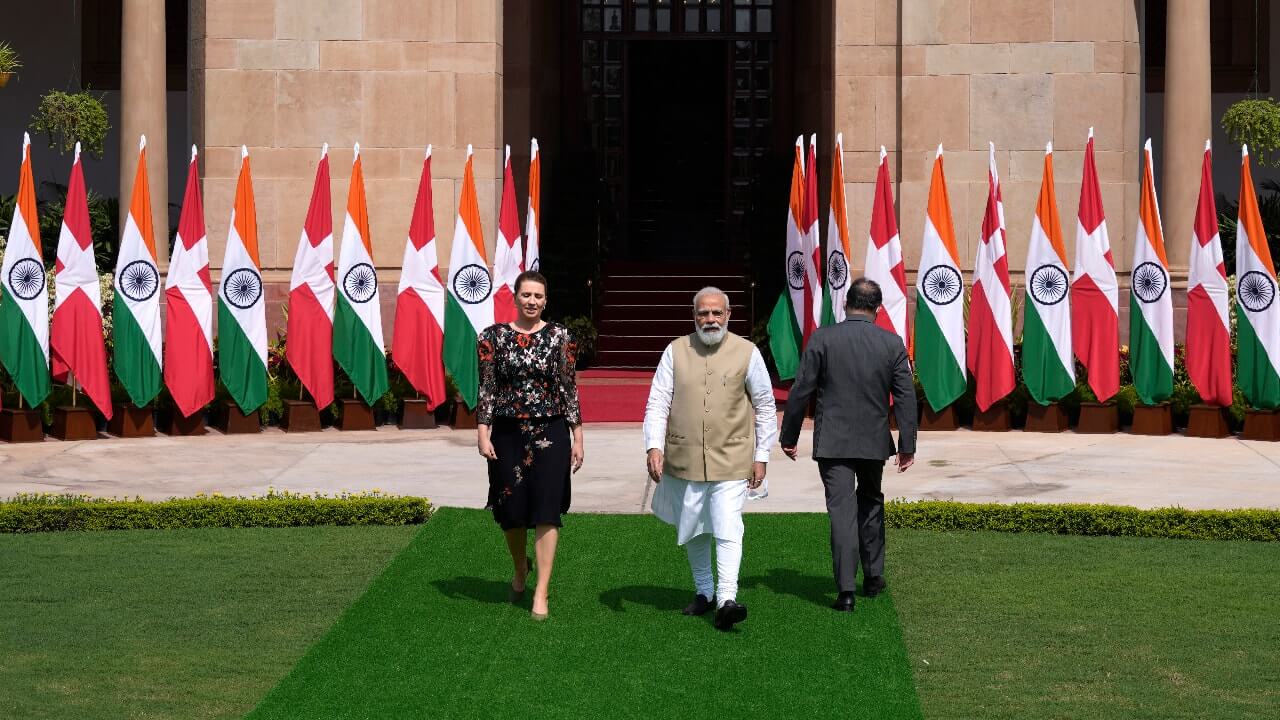Danish Prime Minister (PM) Mette Frederiksen began her three-day visit to India on October 9. After her meeting on Sunday with PM Narendra Modi, the two sides signed four memorandums of understanding (MOUs) and commercial agreements, including one between Infosys Technologies and Aarhus University.
According to a joint release following the meeting between Frederiksen and Modi, “They agreed that India and Denmark are natural and close partners and agreed to enhance efforts for reforming and strengthening multilateralism and a rules-based international order, including freedom of navigation.”
The two countries’ relations have been flourishing since the establishment of their Green Strategic Partnership during a virtual summit on September 28, 2020. The partnership was celebrated as a “mutually beneficial arrangement” that will expand political and economic cooperation between the two countries while continuing to focus on “an ambitious implementation of the Paris Agreement and the UN Sustainable Development Goals.” As a result of the summit, it was decided that Denmark, which is the most energy-efficient member of the European Union (EU), and the Organisation for Economic Co-operation and Development (OECD) would assist India in fulfilling its obligations under various international environmental treaties.
The meeting this past weekend was thus guided by the principles that were agreed upon during the September 2020 discussions. Both leaders reiterated their commitment to the Five-year Action Plan of the Green Strategic Partnership. This includes cooperation in several sectors, including the environment, water, sustainable and smart cities, and science, technology, and innovation.
Speaking about the potential of their partnership, both PMs highlighted the immense potential of India developing renewable energy. In this regard, they celebrated the new investments made by Danish companies in Gujarat and Tamil Nadu. Frederiksen also celebrated the India-led International Solar Alliance, membership to which was recently ratified by Denmark.
The statement said, “Both Prime Ministers stressed the importance of identifying relevant sources of sustainable financing and investments, noting with satisfaction the substantial interest and commitment among private financing institutions.” In this regard, they vowed to “promote investments and project development through enhanced dialogue and cooperation on favourable framework conditions.”
Finally, Modi and Frederiksen spoke of the need to cooperate on issues of regional and global concern. They specifically discussed the “worrisome situation” in Afghanistan. In this context, they agreed to collaborate on countering radicalisation and terrorism, while continuing to provide aid to the Afghan people. They also celebrated the announcement of the European Union’s policy on the Indo-Pacific.
Before the Green Strategic Partnership, bilateral relations were guided by the Joint Commission Cooperation agreement that was signed in 2009, under which India and Denmark agreed to collaborate in several fields, including science and technology, education and culture, and economic and commercial fields. Consequently, several Joint Working Groups for issues such as urban development, shipping, labour mobility, and digitisation were also established.
Hence, the recent MOU’s and agreement further cement the already growing ties between India and Denmark. These developments are likely to bring in more extensive consultations between the two countries, along with increased investment and interoperability.
Several MOUs Signed During Danish PM Frederiksen’s India Visit
This meeting comes in pursuance of the Green Strategic Partnership, which was concluded during a virtual summit in September 2020.
October 11, 2021

SOURCE: MONEYCONTROL
